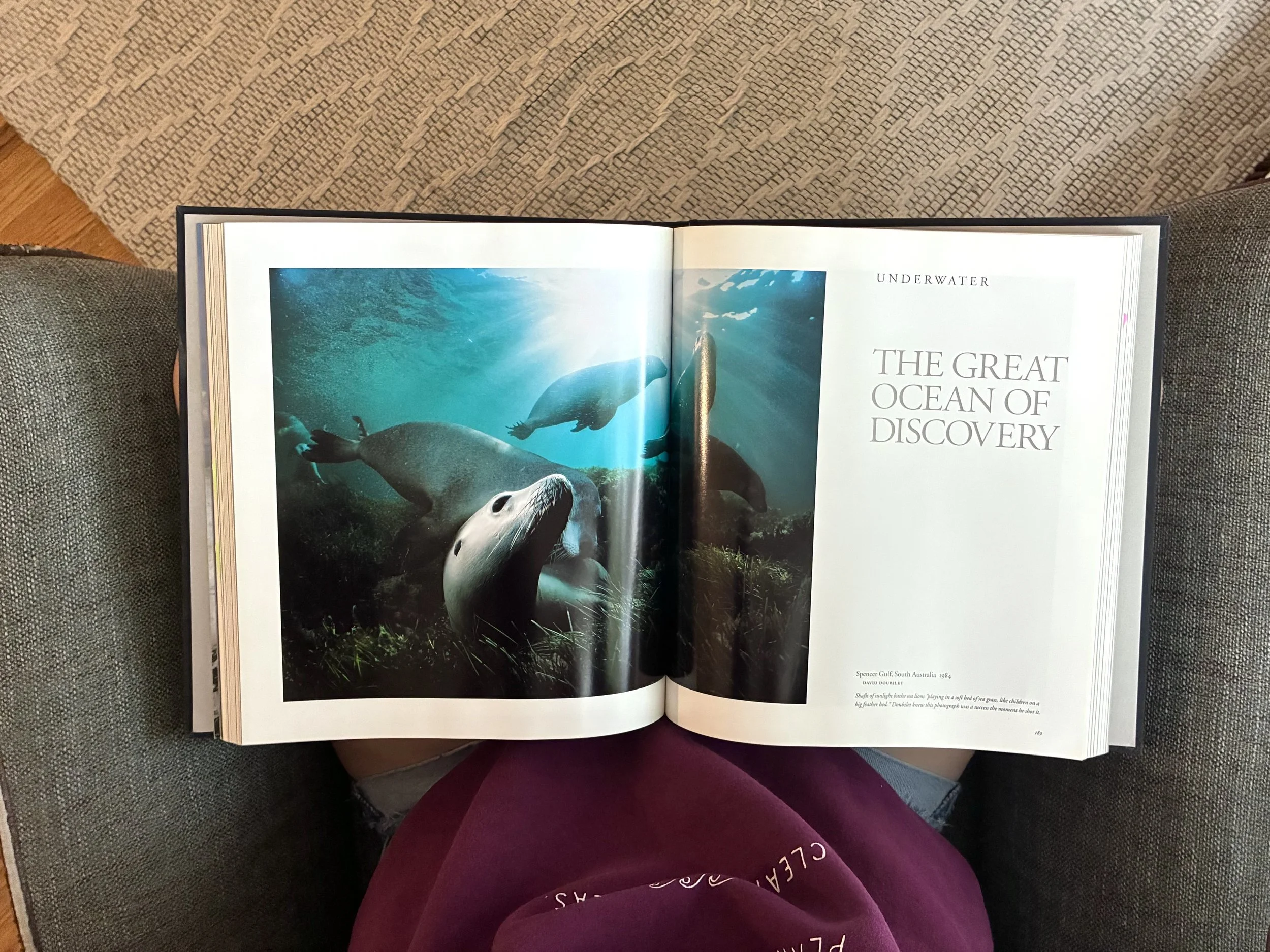Taking lessons from those that came before
Photographers often lament about how laborious it is to put together a published collection of photos into one cohesive coffee table book. I’ve not done it, but I’m super grateful for those who have, because these are quickly becoming one of my favourite ways to seek inspiration. Beautiful prints are infinitely more inspiring to look at compared to digital images on a glossy screen.
I’ve been devouring this book in particular from National Geographic. It’s no shock that Nat Geo photographs are inspiring, but I’ll tell you it’s the written stories in this book that actually take it to another level. I’m learning so much about how Nat Geo photographers have overcome obstacles to their craft and have developed the gear we have today, especially for wildlife and nature photography.
One story in particular about photographer Luis Marden stood out to me the most. Marden travelled to the Mediterranean in 1955 onboard the ship Calypso. He was sent as an underwater photographer and started the beginning of underwater colour photography which didn’t exist at the time.
In that trip his flash bulbs either kept leaking in water, which short-circuited the wires, or the bulb exploded under pressure when he dived leaving shards of glass in his hands.
To fix the leak problem he and his team hand drilled holes into the bulbs and injected them with wax to protect the wires. It doesn’t sound like he actually fixed the exploding bulbs problem on that trip, but to mitigate the risk he found some chainmail gloves used by butchers and he wore those while shooting underwater.
See above for my jimmy-rigging of a group shot without a tripod.When you hike with gear, some gear just doesn't make it up the mountain with you.
This still happens today by the way. Photographers today are often working with product companies to develop new solutions to the problems they encounter in the field or in the studio. It’s such an inspiring element in the evolution of photography.
We can also learn so much from non-creatives whose work has directly impacted your own art form.
This summer our family did a massive road trip, and one of our stops was in New York at the Corning Museum of Glass. Small plug - if you’ve never watched Netflix’s Blown Away series, do it. It’s so much fun! Then take a trip to Corning.
But I confess that before going to this museum my naive self expected only glass art, when in fact I was bombarded with an incredible history lesson about how this museum has been the mecca of all glass development.
I had never stopped to think that glass, the ever present material we have today, has been in development for centuries. And to see displays about the development of pyrex dishes and Corningware alongside the development of photographic glass was mind-blowing. This museum developed some of the most technologically sophisticated glass we have today which has been used in cameras and telescopes sent to space!
Corning is not a company of creators or photographers, but rather scientists whose work made it possible to have the materials we needed in order to capture space exploration.
Now that’s inspiring.






